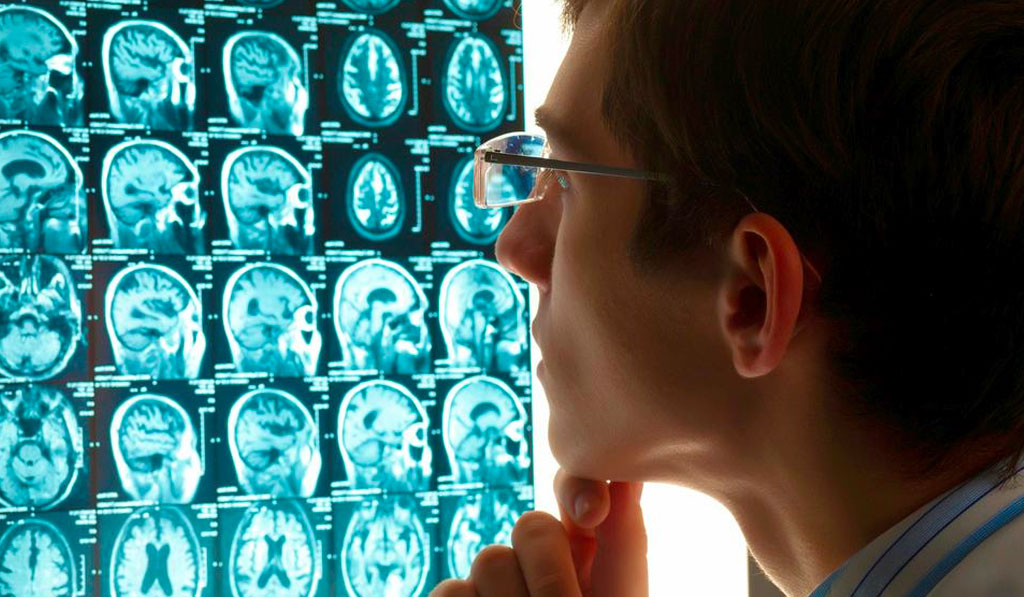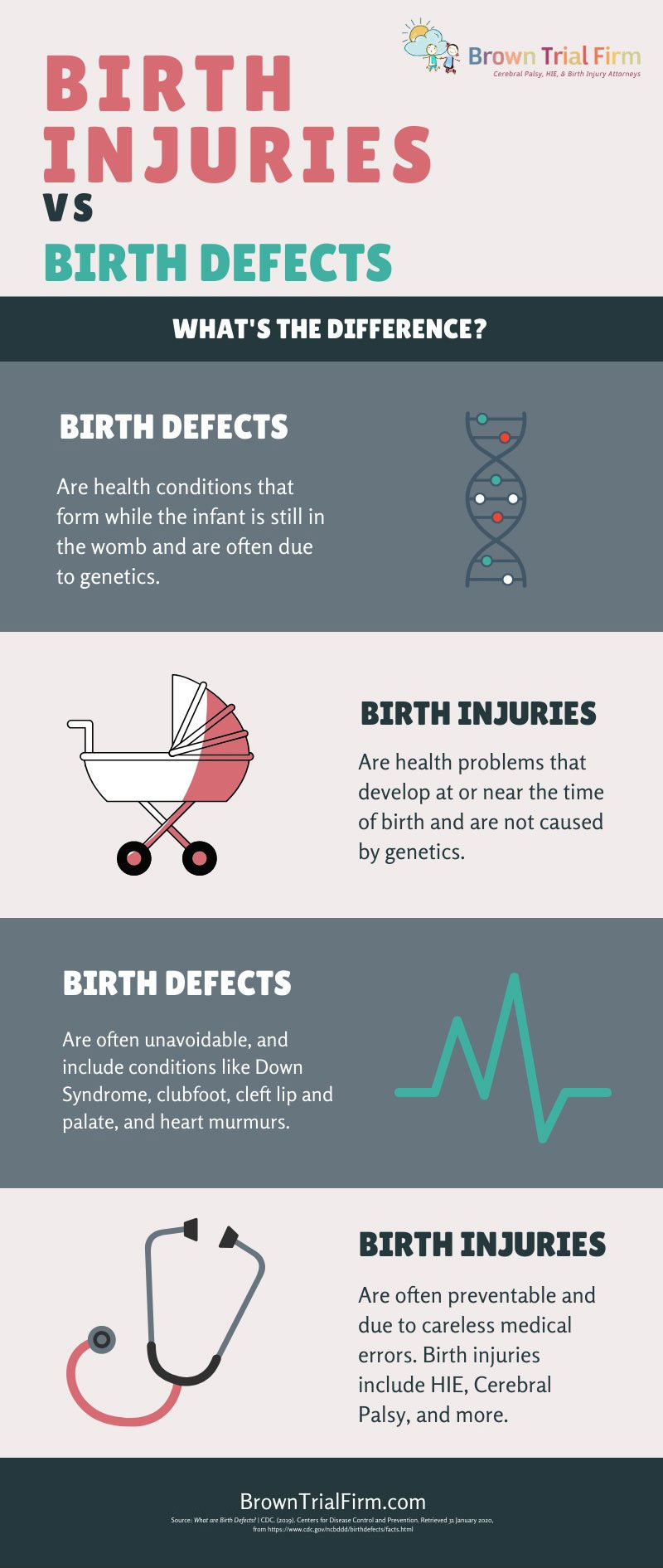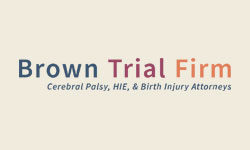Why the difference between a birth injury and defect matters in personal injury litigation
Whether you’re having your first baby or you have children already, one thing is certain about pregnancy and childbirth—every experience is unique. As you entrust your baby’s health, as well as your own, to your medical team, you can reasonably expect that they will follow stringent protocol and act according to accepted safety standards to keep you and your child safe during pregnancy, labor, delivery and postpartum care.
Sadly, there’s always a possibility that birth defects or birth injuries may occur. So it’s important to understand the difference between these 2 issues.
What is a birth defect?
A birth defect is a health problem that arises while an infant is still in the womb. Such conditions often form because of genetics. These issues can impact any part of the fetus’s body and vary in severity. They can occur at any point in pregnancy and often lead to physical, intellectual or developmental disabilities.
According to the Centers for Disease Control and Prevention (CDC), birth defects affect 3% of all babies born in the U.S. annually and are responsible for 21% of all infant deaths.
Common causes of birth defects
The causes of birth defects can be complex and may be a combination of genetic and environmental factors. Some known causes of birth defects include the following.
Genetic factors
Birth defects can be caused by changes or mutations in genes or chromosomes. These changes can be inherited from 1 or both parents or spontaneously in the egg or sperm before conception or during early fetal development.
Examples of birth defects caused by genetic factors include:
- Down syndrome
- Cystic fibrosis
- Sickle cell anemia
Environmental factors
The likelihood of a baby being born with a defect may increase if the mother is exposed to certain toxic substances, chemicals or infections during pregnancy.
Examples of environmental factors that can cause birth defects include:
- Lead
- Pesticides
- Radiation
- Certain viral infections, such as rubella (German measles) and cytomegalovirus
Socioeconomic and demographic factors
Poverty has been linked to a heightened probability of babies having a birth defect. According to some estimates, a significant portion (approximately 94%) of severe birth defects occur in countries with low to moderate income levels.
Factors that contribute to increased birth defects in low-income mothers include:
- Lack of access to healthcare and prenatal care
- Lack of access to nutritious food
- Increased prevalence of alcohol, nicotine and drugs
- Increased exposure to infection
It’s also worth noting that the cause of birth defects is unknown in some cases and can be a combination of different factors.
Common birth defects
While many birth defects can occur in infants, it’s important to note that some birth defects may not be detected until later in life. Some common birth defects include the following.
Down syndrome
Down syndrome is a genetic disorder that occurs when an individual has an extra copy of chromosome 21 in their DNA. It’s the most common chromosomal disorder, with an estimated incidence of 1 in every 700 live births globally.
Individuals with Down syndrome may experience varying degrees of intellectual disability, heart defects, hearing and vision problems, and other health concerns. A flat face, upward-slanting eyes, small ears and other physical features characterize the disorder.
Congenital heart defects
Congenital heart defects are structural problems with a fetus’s heart. They are the most common birth defect, affecting approximately 1 out of every 100 babies.
There are many different kinds of congenital heart defects, including patent ductus arteriosus (PDA), atrial septal defect (ASD), ventricular septal defect (VSD), and tetralogy of Fallot. Symptoms may include abnormal heart rhythms, a bluish tint to the skin and difficulty feeding or breathing.
Spina bifida
Spina bifida happens when the neural tube, which forms the fetus’s brain and spinal cord, doesn’t close completely, leaving an opening in the spine. It can harm the spinal cord and nerves and lead to mobility problems and bladder and bowel incompetence. About 1 in every 2,758 births is affected by spina bifida.
Cleft lip and palate
Cleft lip and palate are birth defects where the lip or roof of the mouth does not develop correctly. A cleft lip occurs when the upper lip is separated into 2 parts. A cleft palate is a split in the roof of the mouth.
In addition to changing the appearance of the face, cleft lip and palate can cause trouble with eating, speaking and hearing. They affect about 1 in every 1,563 births annually.
Anencephaly
Anencephaly is a serious birth defect in which a baby is born without a portion of their brain or skull.
It occurs when the neural tube fails to close properly during embryonic development.
In the U.S., approximately 1 in every 4,600 babies is born with anencephaly. Infants born with this condition usually do not have a functioning brain and cannot survive for long.
Congenital hip dysplasia
Congenital hip dysplasia (CHD) is a condition in which the hip joint develops abnormally in the womb or shortly after birth. This can cause the hip joint to be loose or unstable, leading to pain, limping and difficulty walking.
In severe cases, the hip joint may dislocate or even become completely separated, which can cause permanent damage to the joint and lead to arthritis later in life.
Muscular dystrophy
Muscular dystrophy (MD) is a group of genetic disorders that cause progressive muscle weakness and degeneration, leading to difficulty walking, climbing stairs and performing other physical activities. The majority of people with this condition will eventually require a wheelchair.
Clubfoot
Clubfoot is a congenital condition in which the foot is abnormally turned inward. It’s the most common musculoskeletal birth defect and can affect 1 or both feet. The condition occurs in the womb due to shortened tendons that connect the muscles to the bones, causing the foot to turn inward. It affects approximately 1 in every 593 births in the U.S.
Cystic fibrosis
Cystic fibrosis (CF) is a defect in the cells responsible for mucus, sweat and digestive juice production. CF causes these secretions, which are normally thin, to become thick and sticky, resulting in plugged-up airways and ducts.
Common symptoms include persistent coughing, wheezing, shortness of breath, chest infections, poor weight gain and growth, and difficulty digesting food. People with CF typically have a life expectancy of about 30 to 50 years.
What is a birth injury?
A birth injury is an injury that happens to a baby during labor and delivery that is not caused by genetics. Such injuries are often preventable and are caused by medical negligence.
The average doctor and obstetrics team understand the importance of closely monitoring your health and your baby’s condition during labor and delivery. If either of you shows symptoms of distress, your medical team is responsible for responding quickly and appropriately.
A guide for parents on birth injuries and medical malpractice, covering causes, signs, prevention, and legal options.
Common birth injuries
Birth injuries can range from minor injuries that heal quickly to severe injuries that can have long-term effects on a baby’s health and development.
Some common birth injuries include the following.
Brain injuries
Brain injuries can result from various causes, including lack of oxygen, trauma to the head during birth, and placental problems. Brain damage can be mild or severe and may affect 1 or more areas of the brain.
A brain injury can occur at any stage of pregnancy, but it happens most frequently during labor and delivery. The most common cause of brain damage during birth is a lack of oxygen (asphyxia). Hypoxic-ischemic encephalopathy (HIE) is a specific type of brain injury that occurs when an infant experiences a lack of oxygen at or near birth.
The answer depends. But proper treatment can help minimize the damage and manage the symptoms caused by a brain injury.
Muscle and movement disorders
Muscle and movement disorders in newborns often occur because of an injury to the nerves or muscles during the birthing process due to forceps or vacuum extraction. They can also happen if the umbilical cord is wrapped around a baby’s neck during delivery.
A common type of muscle and movement disorder caused by a birth injury is cerebral palsy.
Epilepsy and seizures
Epilepsy is a medical condition that affects the nervous system and is characterized by repeated seizures. Symptoms of epilepsy include unusual movements or muscle jerks, loss of consciousness, staring spells, confusion or memory loss, and behavioral changes.
Birth injuries and trauma to the head or brain can cause epilepsy. The most common cause of birth injury-related epilepsy is an injury to the brain during labor and delivery.
Facial Paralysis
Facial paralysis is a condition in which there is a loss of movement or weakness in the muscles of the face. This can be caused by damage or dysfunction of the facial nerve, which is responsible for controlling the muscles of the face.
Factors including neurological disorders, infection and birth trauma can cause facial paralysis. Symptoms of facial paralysis in infants include drooping of 1 side of the face, difficulty closing the eye on the affected side, difficulty with breastfeeding or sucking, and difficulty making certain facial expressions.
Erb’s Palsy
Erb’s palsy, commonly referred to as brachial plexus palsy, is a disorder that affects the brachial plexus, a group of nerves responsible for controlling the muscles in the shoulder, arm and hand. The injury usually occurs during birth if the baby’s head and shoulder are stretched in opposite directions. This can occur in problematic breech deliveries or when a baby’s shoulder gets stuck in the birth canal.
Fractures
A newborn’s bones are still soft and pliable at birth. This allows them to bend and move into place during delivery. If a bone gets fractured during an uncomplicated birth, it’s usually because of negligence on the part of the medical professionals involved in the delivery.
In some cases, a fracture or broken bone at birth can lead to lifelong pain, loss of mobility and deformity. The damage may be severe even if the injury is not visible on the outside.
Some common causes of fractures and broken bones at birth include:
- Forceps or vacuum extraction. The use of instruments during delivery can sometimes cause injuries to the baby’s skull or collarbone.
- Breech delivery. When a baby is in a breech position (bottom or feet first) at birth, they’re at a higher risk of fractures to their arms, legs or collarbone.
- Trauma. In rare cases, direct trauma to the baby during delivery can cause fractures or broken bones.
Sources:
What are birth defects? | CDC. (2019). Centers for Disease Control and Prevention. Retrieved 31 January 2020, from www.cdc.gov/ncbddd/birthdefects/facts.html
Your medical team should never disregard symptoms
During your pregnancy, you likely will have days when you’re not feeling well. You might even experience nausea or swelling in your ankles or weight gain that makes you uncomfortable. While some of these symptoms may be par for the course in pregnancy, at other times, the same symptoms may signify an underlying health condition in you or your child that requires specialized medical attention.
This is why you should always report symptoms to your doctor or go to the nearest emergency room if you’re worried that your baby is in distress or you’ve developed an adverse health condition, such as high blood pressure or gestational diabetes. In the past, many preventable birth injuries have occurred when doctors or nurses have disregarded a mother’s or child’s symptoms.
Hospitals have protocols to keep mothers and babies safe during the birthing process. These protocols should include the following:
- Closely monitoring the mother and baby during labor and delivery to detect any potential problems early
- Promptly intervening when complications arise, such as when the baby is in distress or showing signs of oxygen deprivation
- Avoiding interventions like an induction or cesarean section (C-section) unless medically necessary
- Identifying and treating infections in the mother in a timely manner
Contact a birth injury attorney
Many factors, including poor medical care, improper use of medical devices and equipment, and negligence on the part of the medical staff, can cause a birth injury.
If your baby suffered a birth injury that was entirely avoidable but occurred as a result of medical negligence, you have several options available. Start by speaking with a patient advocate and schedule a consultation with an experienced birth injury attorney.
You must act on your child’s behalf to seek financial recovery for losses by filing a personal injury claim in a civil court against the person or people deemed responsible for damages.
At Brown Trial Firm, attorney Laura Brown has years of experience in birth injury law, helping families like yours all across the U.S. get the compensation they deserve. If you need help with your birth injury lawsuit, contact her today for your free consultation.
If you would like help investigating your child’s birth injury, please contact us. We will be happy to give you a free case evaluation.
We can also point you to great non-legal resources that can help you figure out your next steps.
- Cerebral Palsy
- Caput Succedaneum and Cephalohematoma
- Neonatal Intracranial Hemorrhage (Childbirth Brain Bleeds)
- Hydrocephalus (Extra Fluid in the Brain Cavity)
- Cervical Dystonia
- Hemiplegia (Brain or Spinal Cord Injury)
- Hemorrhagic Stroke
- Neonatal Stroke
- HIE
- Periventricular Leukomalacia (PVL) Brain Injury
- Infant Seizures
- Spastic Diplegia (Spasticity in the Legs)
- Top Risks for Birth Injuries
- Fetal Alcohol Syndrome
- Facial Paralysis
- Spinal Cord Injuries
- Bell’s Palsy
- Brachial Plexus Nerves & Erb’s Palsy
- Klumpke’s Palsy
- G-Tubes for Newborns
- Medical Errors
- Cesarean Section & Birth Injury
- Negligence in Brain Cooling Treatment
- Craniosacral Therapy
- Occupational Therapy
- Speech Therapy
- Transition From Pediatric to Adult Healthcare
- Surgical Options for Spastic Cerebral Palsy
- Fetal Intolerance to Labor
- Jaundice (Kernicterus)
- Breech Position
- Placental Complications
- Umbilical Cord Problems
- Uterine Rupture
- Cervical Incompetence (Insufficiency)
- Blighted Ovum
- Necrotizing Enterocolitis (NEC) - Intestinal Inflammation
- Cephalopelvic Disproportion
- Meconium Aspiration Syndrome
- Amniotic Fluid Embolism
- Birth Injury from Premature Delivery
- Developmental Delays
- Abnormal Cord Insertion
- Infections at Birth
- Chorioamnionitis Bacterial Infection
- Premature birth
- Oxygen Deprivation
- Listeria
- Birth-Acquired Herpes
- Placenta Previa
- Placental Abruption
- Mismanaged Fetal Malposition
- Rapid Labor
- Obesity Related Birth Injuries
- Intrauterine Growth Restriction
- Blood Clots During Pregnancy
- Ectopic Pregnancy Misdiagnosis
- Myths & Facts About Birth Injuries
- Bacterial Vaginosis
- Gestational Diabetes
- Maternal Mortality Risk
- Oligohydramnios (Low Amniotic Fluid)
- Infections During Pregnancy
- Excessive Bleeding During Pregnancy
- Congenital Syphilis





